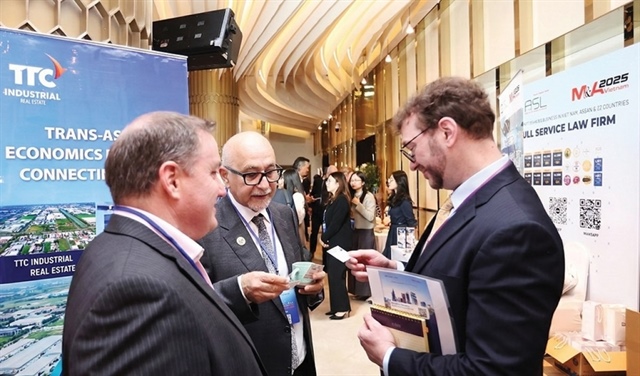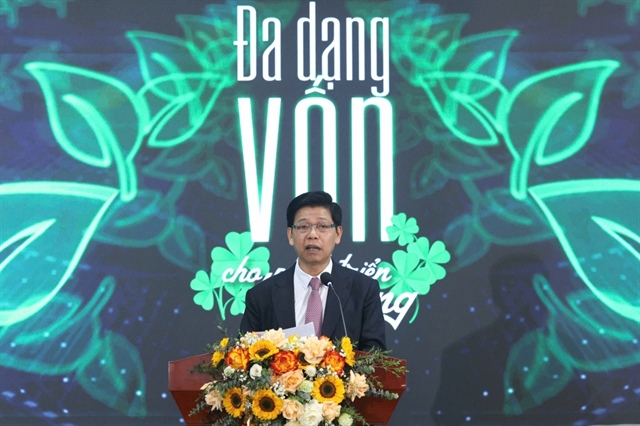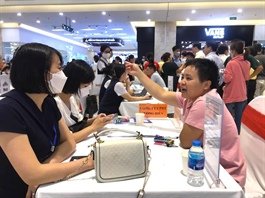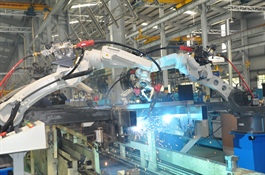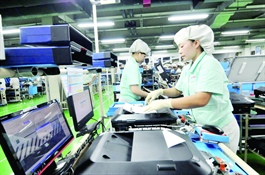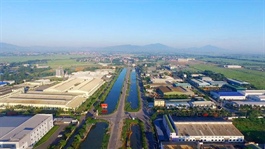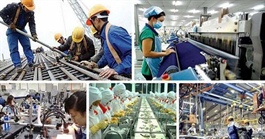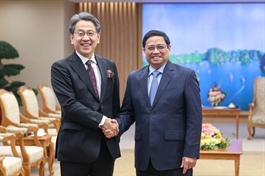Vietnam remains destination of many foreign firms’ shift of investment
Vietnam remains destination of many foreign firms’ shift of investment
Vietnam is seeing a wave of foreign investment shifted from other countries, and many multinational groups boosted their investment in the country, opening up opportunities for local enterprises to get involved in global supply chains.

Japan’s Panasonic Corporation already announced the expansion of its production and business of wiring, lighting, and IQA (Indoor Air Quality) devices in Vietnam.
This is the newest event in the shift of investment to Vietnam, making the country the leading destination for Panasonic to realize its strategy to optimize its value chains, after the corporation shut two refrigerator and washing machine factories in Thailand two years ago.
Hoang Thu Thuy, global procurement assistant general manager at Panasonic Vietnam, told Tuoi Tre (Youth) newspaper that the company's two refrigerator and washing machine factories were built in 2003 and a research and development (R&D) center was established in Vietnam two years later.
This is a world-class R&D center and a nerve center of Panasonic in Southeast Asia responsible for researching and developing household appliances for consumption in Vietnam and export to other Asian countries.
“According to international practices, R&D centers are often located near parent companies in Japan," Thuy added.
“However, the R&D center of the two refrigerator and washing machine factories of Panasonic was developed in Vietnam.
“The center has decided manufacturing activities and adjustments to designs, materials, and products for countries in the region, thus optimizing the manufacturing process and reducing the selling prices of products."
Despite the difficulties triggered by the COVID-19 pandemic, many enterprises have increased their investment and expanded their production in Vietnam.
The Vietnam Association for Supporting Industries (VASI) announced that Apple has shifted 11 factories in Taiwan to Vietnam.
Similarly, many other firms, such as Foxconn, Luxshare, Pegatron, and Wistron, have sped up their operation in Vietnam.
Announcements that read 'French enterprises seek manufacturers of hand tools, such as hammers, pners, and screws' or 'U.S. firms in need of large suppliers of auto accessories' have become more common on the VASI website.
In addition, multinational group Techtronic Industries, which specializes in electrical devices and household appliances with 12 factories worldwide and 76 percent of its products being supplied to the U.S. and Northern Europe, rolled up its sleeves to conduct an investment project worth US$650 million at Saigon Hi-Tech Park in Ho Chi Minh City.
The firm has repeatedly carried out activities to seek more than 200 suppliers in Vietnam in four sectors: plastic injection, molding, electricity, and metal production.
With a long-term investment and development plan, Techtronic Industries expects that 80 percent of its supporting industry products would be produced by Vietnamese companies.
However, the rate has only reached 40 percent so far, the rest imported from China and the U.S..
Fierce competition among Vietnamese suppliers
Despite the advantages ushered in by Panasonic’s shift of investment to and production expansion in Vietnam, it does not mean that many Vietnamese suppliers can take part in the Japanese company's supply chain.
To date, Vietnamese suppliers have accouned for 51 percent of Panasonic’s total suppliers but only 35 percent of the firm’s value.
Panasonic Vietnam currently has seven factories and the firm has a high demand for the development of new products.
However, as its supply chain is available, Panasonic still prioritizes existing suppliers to complete orders after relocating its plants from Thailand to Vietnam.
“In the long term, once the demand has increased, we will seek suppliers in Vietnam to ensure the safety and sustainability for the production activities of our entire supply chain,” Thuy noted.
“But the number of Vietnamese enterprises meeting the requirements of multinational groups is small, just a minority."
Normally, foreign direct investment enterprises in Vietnam will have more opportunities thanks to their better quality management capability and services as well as shorter delivery time.
As for Samsung, it is not easy to develop Vietnamese suppliers to increase the localization rate, especially when it has invested in six factories to turn Vietnam into a leading smartphone factory in the world.
A representative of Samsung Vietnam said the company initially held seminars and exhibitions on supporting industries to look for domestic suppliers.
It has later held programs to provide consulting on improving the labor productivity and the product quality directly instructed by South Korean experts and has trained 406 Vietnamese consultants.
To date, 379 enterprises have received the consulting and seen their productivity increase by an average of 30 percent, some even up to 90 percent.
Nevertheless, the number of Vietnamese first-tier suppliers participating in Samsung’s supply chain has reached 51.
According to Do Thi Thuy Huong, a member of the executive board of the Vietnam Electronic Industries Association, there has been a technology wave and Vietnam is standing in front of many opportunities.
The most typical shifts of the foreign investment to Vietnam are seen in the electronics sector.
A dozen Taiwanese and Chinese enterprises which are the manufacturers and suppliers of smartphones and other Apple electronic devices have invested in Vietnam.
Among these are Apple’s key vendors. In addition, large investors, such as Intel, Samsung, and LG, have beefed up their production in Vietnam regardless of the COVID-19 pandemic over the past two years.


